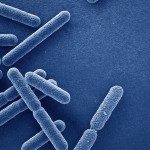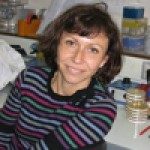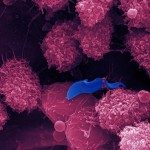| The SAMe (Stress Adaptation and Metabolism) was created in 2018.
Because it is the hallmark of bacterial life, analysis of bacterial stress adaptation has been at the center of our interest since more than two decades and will feed projects in the next years. Most bacteria multiply in changing environments and need to adapt to fluctuating concentration in nutriments, chemicals, toxic or not, or must keep up with physical challenges. Thus, one can describe bacterial stress adaptation as a 3-step process: (i) sensing of the stress causing perturbation, (ii) modification of cellular processes to protect, repair or mitigate unwanted effects and (iii) stabilization of a new cellular state (homeostasis) in the conditions that caused unbalance in the first place. Out interests aim at deciphering mechanistic basis of biological processes ubiquitous and conserved in living organisms, for which E. coli can hold as a model. [Fe-S]-based biology stands as a perfect example of such processes. Since very early stages of evolution, their remarkable chemical versatility has been exploited by many biological processes, pathways and mechanisms and this is without surprise that [Fe-S] based biology motors several “stress sensing and adaptation” circuits. Our past, present and future projects aim at appreciating the contribution of [Fe-S] to cellular homeostasis. Stress-inducing events that we are studying are redox changes, such as aerobiosis vs anaerobiosis, presence of toxic compounds, such as NO or antibiotics, and nutrient limitation, such as iron scarcity, fatty acids or sulfur limitation. Cellular modifications that contribute to a new stable state under study include genomic evolution, genetic reprogramming, tRNA modification, bioenergetics versatility and fatty acid/lipid metabolism. We will capitalize on our phylogenomic studies to raise new questions about the evolution of [Fe-S] biogenesis systems in procaryotes. The contribution of [Fe-S] proteins to sense and convey sulfur limitation, as suggested by our recent study, or NO signals will bring us to an integrated view of the cell wherein protein translation talks with sulfur homeostasis, and nitrosylation might be connected to carbon degradation. We found versatility of respiratory chains to be a key factor in susceptibility to aminoglycoside. Its exploitation for adapting to different compartments in the gut will next lead us to decipher the role of a AAA ATPase at the crossroad between membrane biology and bioenergetics. Most projects are using E. coli lab strain as a model, yet in some cases pathogenic (Shigella, UTI) or natural E. coli isolates will be studied such as to position our findings within the context of bacterial pathogenesis and/or microbiota dynamics. The development of these projects will rest on our expertise in molecular microbiology, biochemistry and genetics, our collaboration with experts in complimentary fields (chemistry, phylogenomicists, physicists, cell biologist, “microbiote microbiologists”) and the availability of cutting-edge platforms (omics, biophysics, structural biology) present at the Institut Pasteur. |
Members
Former Members
2000
2000
Name
Position
2018
2025
Jean-Michel Betton
Senior Researcher CNRS
2023
2025
Gabriela Boelter
Post-doctoral
2022
2025
Macha Dussouchaud
Doctoral Student
2023
2025
Marouane Libiad
Chargé de Recherche
2023
2024
Marie Anselmet
Ingénieur
2023
2024
Juan Ignacio Garro Rodriguez
Graduate Student, Costa Rica
2020
2023
Soufyan Fakroun
Post-doctoral, Institut Pasteur
2023
2023
Louise Destouches
PhD, UK
2019
2023
Jessica El Khoury
Post-doctoral
2021
2023
Oliver Caspari
Senior lecturer, Köln, Germany
2018
2022
Francesca d'Angelo
Post-doctoral, CEA
2019
2021
Pierre Garcia
Post-doctoral, Institut Pasteur
2018
2020
Alessandra Lo Sciuto
Biomedical Company, post-doctoral student, Italy
2018
2022
Viola Pavoncello
Post-doctoral
2019
2023
Marine Lenon
Post-doctoral
2024
2025
Axel Dufour
Stagiaire M2














